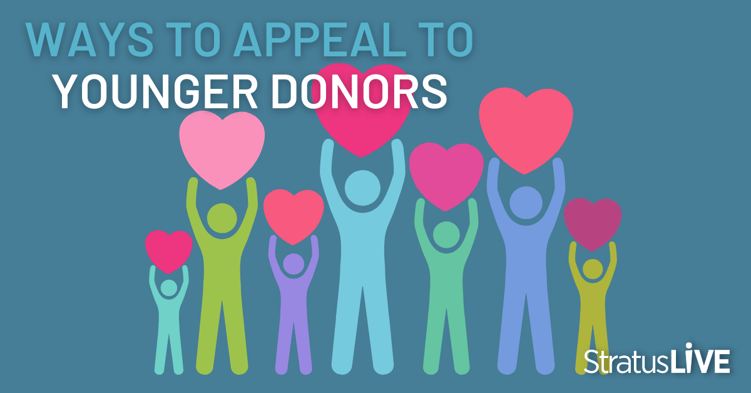
To truly tap into the potential of younger donors, nonprofit organizations must demonstrate how their mission aligns with the values and concerns of this generation, and leverage their enthusiasm to drive meaningful impact. Organizations can expand their donor base and attract young contributors to help amplify their brand's message and reach.
Here are considerations young donors make before they volunteer or donate to a cause:
- Does this organization share my ideals and values?
- Does this organization share specific details on how my donation will be used?
- Is the donation process easy?
- Can I donate small amounts at a time?
How your organization can engage with young donors:
1. Offer multiple ways to engage
Donate- Younger donors should be offered a variety of donation options, including credit/debit cards as well as online payment mechanisms like PayPal, Zelle, or Venmo. Ensure your website is mobile-friendly with eye-catching page layouts in your brand colors.
Share-Give younger donors opportunities to participate in peer-to-peer fundraising on behalf of the organization via social media. They can share your mission with their friends and family, increasing your nonprofit’s donor base.
Volunteer- Volunteering time appeals to younger supporters with limited discretionary means, who are typically at the beginning of their careers. Offering opportunities to volunteer, whether it is an individual or group volunteer activity will lead to a long-lasting relationship.
2. Start with school children – educate them about the importance of giving back
Giving tours to children at your nonprofit is one way to get them involved in charitable efforts. Offer them educational materials about all the ways they can contribute. Although children may not have the financial means to donate, educating them about the importance of giving back can lead to a positive impact on their character and values, shaping them into kind, upstanding individuals. Starting early can set the foundation for a lifetime of philanthropy and community involvement. While this is a long-term strategy that will pay off in the future, these interactions may also have a short-term impact on their parents' giving.
3. Partner with young leaders' groups
Partnering with or even starting your own young leader’s group can link community-minded young adults who want to fundraise, advocate, and campaign to enhance your mission. The United Way of Rhode Island offers a Young Leaders Circle with various levels and benefits to become involved. This is an effective way for young people to become engaged and grow personally and professionally while expanding your organization’s reach.
4. Partner with social enterprises
Social enterprise is a relatively new term. A social enterprise is an organization that focuses primarily on social or environmental goals. It could be a nonprofit organization or a private corporation. Profits from a social firm are primarily reinvested for social goals, rather than used to maximize owner or shareholder value.
Collaborations with social enterprises are a great approach to bring in more people to an organization and expand into new areas of activity. Building a network of social enterprises will enhance the character of the organization by bringing in reputable and trustworthy influencers.
5. Young Leader Award Ceremonies
Host an awards ceremony to honor young leaders who have made a positive impact on the community. Some examples of categories for awards are Most Successful Fundraising or Awareness Campaign, Volunteer of the Year, Impact Initiative Award, and Social Responsibility Leadership Excellence.
The United Way of Richmond and Petersburg offers the Young Leaders Society Award which is given to an outstanding individual who has demonstrated commitment and enthusiasm for giving, volunteering, and advocating.
6. Use social media – dig into community groups and networks
Having a presence on Facebook, Instagram, and other popular social media platforms is critical to reach younger donors. Determine which platforms prospective young donors are active. Where do they have conversations with like-minded peers about issues and causes that matter to them? Tap into these networks and educate these donors about your cause.
Also consider creating a community group of young leaders on social channels like the United Way Young Leaders Society and Aloha United Way's Society of Young Leaders on LinkedIn. As these young donors seek to build their career, your organization will be seen as an influential voice, helping them build networking opportunities.
Conclusion
It's time for nonprofits to unlock the potential of younger audiences by using the right tools and messaging that resonates with them. By leveraging the channels that young donors are most likely to respond to, organizations can tap into their enthusiasm and connection with their cause, opening up new opportunities for engagement and support.For those looking to delve deeper into engaging with #NextGen Givers, we invite you to watch our on-demand webinar.







